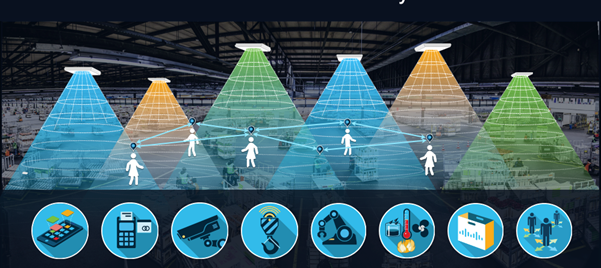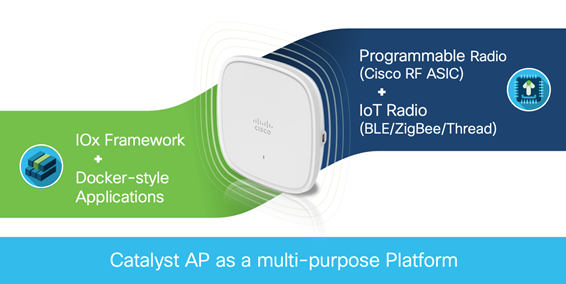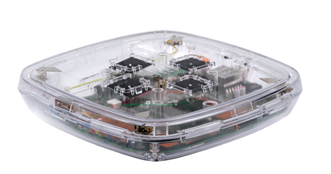Are you one of those people who, when entering a new building (such as a hotel, corporate office, stadium, hospital—literarily any building) the first thing you do is look up to spot the presence of an access point (AP)?
What? You don’t? You don’t know what you are missing!
Yes, I am one of those people. Call it professional deviation, but when entering a building I must check if there is a Wi-Fi signal, where the APs are located, what’s the AP brand, how have the access points been mounted, what type of antennas they us. Sometimes I even take pictures, but don’t tell anyone.
Ok, but even if you are not a human Wi-Fi sentinel like myself, I am quite sure that when you see an access point, you immediately think of a reliable, secure (and yes, hopefully free!) wireless connection. Today it is all about Wi-Fi 6, so you have even greater expectations, right?
I agree with you, the primary role of the AP is to provide reliable coverage and a secure connection, with the bandwidth needed for your devices and applications to work properly.
But what if I told you that there is much more than connectivity to a Cisco Access Point? Cisco has embedded so many cool innovations into the Catalyst Access Point that by the end of this blog, you will look at an access point in a totally different prospective.
When you think about it, the AP can do much more than just offer Wi-Fi connectivity: you have these intelligent network devices sitting in the ceiling with a privileged view of people and things moving around. The APs are in the perfect spot to capture a lot of useful information beyond the client data packets. For example, getting the location of movable devices.
The AP can act as a multi-protocol (multi-language) gateway, capable of enabling multiple wireless technologies. It can also open up a lot of interesting use cases in the IoT world, for example simplifying Retail management using integrated remote shelf labeling solutions.
We have built the Catalyst AP with this idea in mind: to make it a multi-function and multi-purpose platform for innovation. We do this first by embedding a dedicated, software programmable radios in the access point. The main purpose of this radio is to grab and analyze RF information so that the system can make intelligent decisions. Cisco brings the benefits of programmable hardware to the edge of the network: being programmable, it allows Cisco to introduce technology innovations without requiring a hardware refresh. For the Catalyst Wi-Fi 6 access points, the built-in programmable radio is called Cisco RF ASIC.
We then combine it with the Cisco IoX framework, bringing the possibility to load a Cisco or 3rd party containerized application directly on to the Catalyst AP in a completely automated manner (more info here). This combination of programmable hardware and embedded software capabilities is an industry first and allows Cisco to bring new innovative wireless solutions faster to market.
Let’s look under the AP hood and understand the benefits of these innovations. The first focus of an Access Point is the Wi-Fi connectivity, so we built a state-of-the-art Wi-Fi 6 AP with an awesome RF design capable of embedding ten different antennas in a small form factor. It’s actually 25% smaller and lighter than the previous models, allowing for easier mounting and even more pleasant aesthetics:
But Cisco goes beyond the Wi-Fi standard in multiple ways; first, thanks to a close collaboration with device vendors (Apple, Samsung, and Intel), Cisco has embedded additional functionalities to make sure that these vendor devices have a better experience on a Cisco wireless network. Apple Analytics, Apple FastLane and Fastlane+, Samsung and Intel Analytics are some of the most recent examples of this partnerships. The insights Cisco gets from client devise are super critical for troubleshooting because they provide the client view of the RF network, which is usually different from the access points’ view.
With the introduction of the Cisco RF ASIC as a third dedicated radio, the wireless connectivity is optimized because this offloads all the heavy-duty work from the client-serving radios: resulting 25% increase in client performance is expected for all clients, not only Wi-Fi 6 clients. The dedicated programmable radio is continuously scanning and grabbing a lot of critical information about the RF environment, client onboarding, interferences and analytics in general. From there, it’s streamed efficiently and securely to the cloud and use Machine Learning (ML) and Artificial Intelligence (AI) in DNAC Assurance and DNA Spaces to make the data actionable. A clear example of this is Intelligent capture in DNAC Center Assurance which provides a new way of proactively troubleshooting the network.
This is going to save you and your team a lot of time, effort and busy work.
And finally, the AP can act as an IoT gateway, supporting multiple IoT protocols via software. A Cisco or third party APP can be installed directly on the AP in a fully automated fashion. This opens a lot of opportunities for. One example is an IoT gateway for remote shelf labelling that allows customer to save operational and capital expenses by not deploying a parallel IoT network. Learn more about the use cases of Application Hosting on Catalyst 9100 Access Points.
So, I am sure you agree with me that a Cisco Catalyst Access Point is much more than just Wi-Fi connectivity; and next time you enter a building you will turn your head up and look for those great pieces of wireless innovation.
Learn more about Cisco Catalyst Access Points.
Check out our Intent-Based Networking video channel.
Subscribe to the Networking blog






CONNECT WITH US